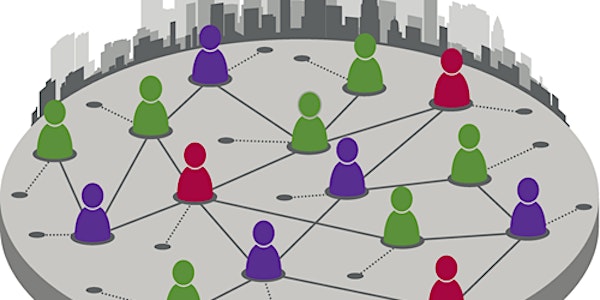
Let’s put people in place: Using agent-based models to investigate the impact of neighbourhood settings on visits to green spaces and physical activity
Date and time
Location
Room B1.11-1, Outreach Centre (University of Edinburgh)
9C Holyrood Road (next to Levels Cafe) Edinburgh EH8 8FP United KingdomDescription
Let’s put people in place: Using agent-based models to investigate the impact of neighbourhood settings on visits to green spaces and physical activity
This seminar is organised by the Centre for Research on Environment, Society and Health (CRESH), OPENspace and the Physical Activity for Health Research Centre (PAHRC) and everyone warmly invited to attend.
Emerging evidence in the health literature suggests that the built environment and the design of urban areas can facilitate healthier lifestyles and contribute to reducing the risk of noncommunicable disease. Neighbourhoods may provide important resources to create opportunities for residents to engage and interact with others and with their surroundings. A higher density of residential dwellings and a greater mix of local land uses have been found to increase the likelihood of people walking, cycling, and encourage local social interactions. Walkable neighbourhoods, with well-connected streets and low traffic volumes, are more likely to promote physical activity. Land uses associated with nature, such as parks and green spaces, have been shown to be an important feature for healthy child development. Natural play environments appear to favour children’s cognitive and physical development, and may positively affect emotional aspects, cognitive functioning and physical activity.
The distribution and configuration of different land uses produces spatial heterogeneity in the built environment: in most cases, no one place resembles another. Accessibility and proximity to different land uses and facilities varies significantly depending on location; therefore, considering the implications of the spatial context is crucial when examining the impact of the neighbourhood setting on individuals’ health and wellbeing. Adding to the equation, heterogeneity in individual characteristics only increases the complexity and interrelated motivations that come together when considering the possible mechanisms and causes that may affect health outcomes.
To what extent alternative configurations of space may interact with individual attitudes and encourage people to engage more with environments associated with positive implications on health is an open question in urban planning. Studies have shown that the provision and maintenance of green and recreational space does not produce the same levels of usage across different communities. For instance, a socio-economic gradient seems to exist in the propensity to visit urban parks.
Here we suggest that agent-based models (ABMs) are valuable tools to examine the impact of the urban environment on certain population health issues. ABMs are computer-based models that explicitly represent individuals (agents) with their characteristics, states and rules of behaviour. The agents are located in a virtual environment where they make decisions, perform actions and interact with one another. The physical environment can also be explicitly represented in ABMs to create the “right” contextual setting for each agent in the model, allowing us to explore the implications of spatial heterogeneity. Population health may then be studied in an ABM as an emergent pattern resulting from the aggregation of the agents’ states during the simulations.
We demonstrate the possible use of ABMs using two models we are currently developing: simulation of visits to urban green spaces, and children’s movement and physical activity in the neighbourhood.
Dr. Jonatan Almagor joined the Neighborhood and Communities research group in the MRC/CSO Social and Public Health Sciences Unit at Glasgow University in September 2018. He is currently using data from accelerometer and GPS tracking of children, collected in the SPACES project, to develop an agent-based model (ABM) that simulates children's movement patterns and physical activity in the urban environment.
Jonatan received his PhD from the Porter School of Environmental Studies at Tel Aviv University. In his PhD research he investigated urban dynamics, patterns of urban development, and the impact of land use planning. He developed an ABM that explores the outcomes of interactions between urban developers and planning regulators. He worked as a researcher at the Department of Epidemiology and Preventive Medicine at the Tel-Aviv Medical Center investigating the spread of antibiotic-resistant bacteria, using agent-based and mathematical models.
Dr. Stefano Picascia joined the Neighborhood and Communities research group of the SPHSU in August 2018. He is currently working on modelling people’s engagement with nature.
Stefano received his PhD from the Centre for Policy Modelling at Manchester Metropolitan University. His Doctoral work used agent-based models to explore the impact of processes of capital valorisation – such as property investment – on the spatial and cultural configuration of cities.
Organised by
This seminar is organised by the Centre for Research on Environment, Society and Health (CRESH), OPENspace and the Physical Activity for Health Research Centre (PAHRC)
Please contact thelma.dugmore@ed.ac.uk for further information